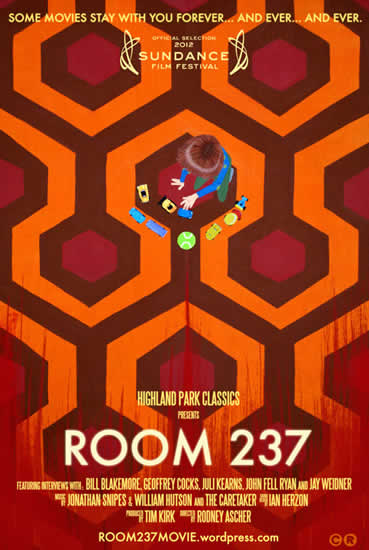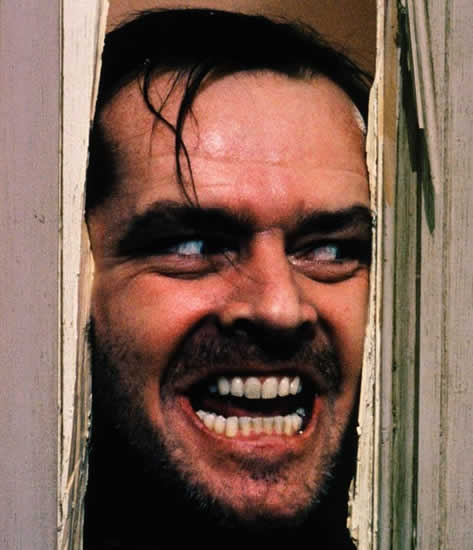 “…and I couldn’t understand why I was so attracted to watching a film that I actually didn’t like.”
“…and I couldn’t understand why I was so attracted to watching a film that I actually didn’t like.”
When Stanley Kubrick’s The Shining came out in 1980, audiences and critics hated it. Stephen King, whose book it was based on, hated it. Kubrick fans thought the master filmmaker had finally lost it. But like it or not The Shining made a lasting impression on pop culture. The image of Jack Nicholson pressing his menacing face through the axed-out split in the bathroom door is iconic. If you’ve seen it, you probably remember the gorgeous big wheel scenes—Danny rolling through the hallway over the 70s style hexagonal carpet. That, along with the mythic hedge maze, the extraordinary image of blood gushing out of the hotel elevators, and perhaps most unforgettable, is Danny (or is it Tony, the boy inside Danny’s mouth?) chanting “REDRUM!” If we didn’t like the film, we at least remembered it. In fact, some of us couldn’t stop thinking about it.
Over the years, after revisiting the film, critics and viewers determined The Shining to be yet another Kubrick masterpiece. But fans didn’t just like The Shining; they obsessed over it. A massive body of analysis, dialogue, and obscure theories began to surface about the film—a conversation that continues today. Rodney Ascher’s Room 237 explores this labyrinth of audience response via five expert obsessives: an award-winning journalist (Bill Blakemore), a Professor of History (Geoffrey Cocks), an author/playwright (Juli Kearns), a musician/artist (John Fell Ryan), and, as Wired magazine puts it, an “erudite conspiracy hunter” (Jay Weidner).
The attention to detail these folks give to The Shining is impressive, if not disturbing. Speculation is all over the place. There are theories about genocide, holocaust, sexuality, Kubrick’s use of fairytales, government conspiracy, and other more esoteric intimations. Some of the interpretations are compelling. Most of the observations are, at the very least, amusing. But there are plenty of moments when the commentary careens into reckless subjectivity and kooky conspiracy theory. While this might be troubling to some, it’s all part of the conversation. It all suits the spirit of Ascher’s film—and Kubrick’s film, for that matter. In a way, The Shining is a kind of anti-horror movie, littered with subtle jokes and B-movie references. Kubrick plays a game with the genre and his audience, while simultaneously exploring truly disturbing themes. Similarly, Ascher’s film is a kind of anti-documentary. His approach is in no way authoritative. He not only leaves room for ambiguity and uncertainty, but actively creates tension with it, revealing his roots as a horror movie buff.
Ascher’s creation is as much intelligent pop art as it is a documentary. While the commentators attempt to explain Kubrick’s startling imagery, impossible sets, and recurring symbols, Ascher deconstructs the deconstructions by splicing and superimposing archive footage as well as scenes from other Kubrick films together with The Shining. The disorienting but tantalizing imagery is accompanied by a soundtrack of just the right vintage and tone, creating a creepy retro vibe befitting to the subject.
What’s most remarkable about Room 237 is how contagious it is. In The Shining, Room 237 is the forbidden room—the dark heart of the story—and that’s what fans are trying to get at. An hour into Room 237, it’s hard to not wonder, question, and devise new theories. The obsession takes hold. Ascher and friends lure viewers into the labyrinth, where we can play forever and ever and ever.
Room 237 opens in Los Angeles and Orange County Friday, April 5, 2013. It will be opening locally at the Sundance Sunset in West Hollywood, Laemmle’s Playhouse 7 in Pasadena, and South Coast Village in Costa Mesa.
2012
USA
102 MINUTES
ENGLISH

